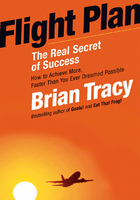"The function of leadership is to produce more leaders, not more followers."
Ralph Nader, from Crashing the Party
I was sharing my latest complaints about my peers with my boss when he suddenly sighed so loudly I stopped mid-sentence. When he had my attention, he said, "I know you work hard. I know you want the best for the company, but everybody seems to let you down. Is anyone ever good enough for you?"
I sat paralyzed for a dreadfully long time. When I finally exhaled, the tension rolled down my shoulders resting heavily in my legs. I felt both embarrassed and amazed. My coach had once made a similar observation after my rant about my dating fiascos. Here was my wall of protection showing up again at work. All I could say was, "Of course. You're right." I knew I would never see my work relationships the same again.
The question my boss asked me led me to recognize a pattern of behavior that kept me from fully engaging with my team members to resolve problems. I am a high achiever. I did good work on my own and felt snubbed the moment I wasn't recognized for my accomplishments or grand ideas. To ease the pain, I found reasons to complain about how others were not living up to their promises or expectations. Instead of learning how I could influence more effectively or realize even grander results with others, I focused on highlighting their flaws.
Whether my boss knew all of this or not, he had asked me the perfect question that disrupted my pattern of thinking and forced me to reflect on what I was saying. If he had told me what I was doing instead of asking the question, I would have resisted his allegation. No matter how clear and targeted were his comments, his words of wisdom and advice would have hit the automatic reject button in my brain.
It wasn't just the powerful question that had such a profound effect on me. His timing was impeccable. I felt he heard me. He was responding to my story, not practicing a technique. I was amazed, uncomfortable, and a bit embarrassed but I didn't feel judged. He had masterfully moved me into the Discomfort Zone. My sense of who I thought I was changed forever.
I share this example to help clarify what using the Discomfort Zone is in practice and, more importantly, what it is not. Using the Discomfort Zone is not the same as initiating a challenging conversation. The process is based on a specific type of coaching most useful when it is clear that a shift in perception and self-awareness would be helpful to the person you are with as he or she stumbles through a perplexing situation. You choose the Discomfort Zone when you want to assist others in thinking differently.
Not Another Conversation Book
You may have read one or many of the books teaching how to hold challenging, courageous, fierce, crucial, real, and authentic conversations. You may have a favorite; mine is Authentic Conversations.[8] These books are important. They teach leaders how to better approach a conversation about difficult issues they need to address.
These conversation books focus on the speaker. They provide direction on how a person can best deliver a message and achieve an outcome for themselves. There might be a mutual benefit, but the primary target is helping the person who speaks first.
This is where The Discomfort Zone differs. The focus shifts to the receiver, the person you are speaking with. You don't have a message to deliver; you desire someone to expand his awareness to see his situation and himself in a different light. You don't tell him what you want. You want him to discover, create, or unveil this new reality on his own. In short, you want him to think for himself. You are the facilitator of this process.
You might be thinking, Why bother? Most corporations honor those with a no-nonsense, frank, get-to-the-point approach. The leader who is respectful yet firm keeps the engines running. Straight talk and efficiency are requisites in a competitive marketplace.
Yes, using direct, candid talk can alleviate inefficiencies, hold people accountable for their goals, and align people around clear expectations. There may be negative reactions, but the sting is brief if they see value in the solution and in their contribution. As the authors say in the book Crucial Conversations, the goal is to "Be persuasive, not abrasive."[9] There are times you will choose to have these types of conversations.
Even when done well, though, when the focus of a conversation is on what the leader wants, a breakthrough in perception won't be achieved. The receiver might agree. Problem solving might be satisfactory. Incremental shifts in behavior might occur, but the opportunity to cause a mind-changing tilt in perception that allows the person to see a situation in an entirely new light is lost. If, as Ralph Nader said, "The function of leadership is to produce more leaders,"[10] then any conversation that starts with the leader declaring the way forward misses the mark.
If instead you believe the person you are with is capable of seeing things differently and finding new solutions with a little help thinking it through, you are likely to get better results if you act more as a "thinking partner" than a holder of the truth. You may want the person to change his point of view, but you facilitate the shifts in thinking through questions and reflective statements instead of by telling him your desires and opinions. You may feel you have less control in these conversations-at least until you become more comfortable with the process-but the outcomes are worth the effort.
How This Approach Differs from Traditional Leadership Coaching Techniques
Coaching has become a recognized leadership skill over the past decade. Leaders who coach are more adept at triggering people's imagination and creative thinking skills. Using an inquiry approach has proven to engage people more fully at physical, mental, and emotional levels. However, much of the coach training for leaders falls short of producing breakthrough results.
Traditionally, coach training for leaders teaches how to be supportive, encouraging, inquisitive, and nonjudgmental. Most approaches are appreciative, helping people build on their strengths instead of focusing on their weaknesses. Solutions are often creative. People feel heartened instead of defeated.
These approaches are useful but often not enough when dealing with bright, ambitious people with disparate, strong opinions.[11] Challenging assumptions and raising uncomfortable questions promote critical thinking. Discomfort Zone conversations start by building trust and rapport, but then the conversations go deeper to create the possibility for a breakthrough in thinking.
Most strong-willed people respect someone who stands up to their resistance, and then asks them the questions that provoke them to scrutinize what they do. In a recent interview, world-renowned coach Sir John Whitmore said, "I think that was how it was when coaching began, being gentle and supportive. But I think under today's circumstances this is changing."
Many leaders and coaches are not trained or courageous enough to use discomfort to create breakthroughs. Whitmore added, "I personally like being challenged. I have a couple of coaches who coach with a scalpel and I love it." To break through the barriers and address protective thinking habits, you must be willing to hold a balance of pressure and care in the conversation. You can't avoid challenge if you want people to see the world around them in a revolutionary way."
Also, many leaders and coaches are trained to quickly shift the person from feeling negative to positive, going away from the problem to what is possible. If this happens early in the conversation, the person might feel ashamed for continuing to feel angry or frustrated during or after the conversation. His or her real needs remain unspoken.
When working with the Discomfort Zone, you may trigger negative emotions, which is a good sign. When a person realizes she has blocked a truth that was in her face the entire time, she may feel mortified, angry, or sad. As explained in the Introduction, these emotions indicate learning is occurring. You have broken through a protective barrier in the brain. The person is finally confronting her rationalizations or seeing her blind spots. Because of this, a clearer and broader understanding of the situation can emerge.
The goal is to break through a person's guise of knowing. When people face a surprising revelation about their behavior, they will pause and then react. Malcolm Gladwell quoted psychologist Joshua Aronson in Blink saying, "People are ignorant of the things that affect their action, yet they rarely feel ignorant."[12] The reaction to bringing these things to light will register somewhere between slight discomfort and an emotional outpour. These reactions indicate their mental frames are restructuring, clearing the way for people to see what is truly driving their behavior when they couldn't see this before. Creating this discomfort gives people a chance to evaluate their experiences.[13] The truth can hurt or at least surprise before it sets people free.
Using the Discomfort Zone teaches leadership coaching methods that include the means to create trust as well as the ability to challenge and expand a person's thinking. In the process, the leader remains nonjudgmental and caring so the person feels safe enough to express a range of emotions as his or her brain recognizes something unexpected. This is how leaders create learning environments that improve productivity, innovation, and leadership bench strength.
Timing and Purpose
There are times when the methods taught in this book may be inappropriate for a specific situation. The best times to employ the techniques are when the person is having interpersonal/communications issues or motivational blocks and when you are helping someone develop decision-making and leadership capabilities. Even in these scenarios, specific circumstances must be present to have the intended effect.
The Right Time to Choose the Discomfort Zone
A common leadership misperception is if someone isn't performing well, he doesn't know what he is doing and needs to be told what action to take. Nothing is more annoying than being told how to do something you already know. If you have been doing this to someone, you may be the source of his dwindling motivation. The choice to tell, teach, or advise someone should not be taken lightly.
Seek to discover what he already knows and is capable of doing. Then if you both determine company or project knowledge is needed, you can share what you know or provide resources. If skills are wanting, you can pinpoint what specific training will help.
Most likely, the competent person you are speaking to doesn't need knowledge or training; he needs your support in expanding his view around an issue and in understanding the impact of his behavior and decisions. These needs are the perfect criteria for using the Discomfort Zone. Start by understanding what he knows and then seek to discover what gap in perception or emotional block is keeping him from seeing a plausible solution. When the person has sufficient skills and knowledge, you will be more successful when you energize him using what he knows than to exhaust him with what you know.
Your Belief in the Person's Potential
The conversation must be based on your belief in the person's potential to grow. Ask yourself the following question: "Is it more important that the conversation is about discovering how he or she is able to work best or that I steer the ship so goals are achieved?" If you believe in the latter, it is more likely people will wait and see what you decide than take the risk to think for themselves with you. You will achieve a greater payoff when people see you as a leader who authentically cares about them more than when you are acting as the organizational fixer.
To trust you enough to work with you inside the Discomfort Zone, people have to feel you believe in them possibly even more than they believe in themselves. They know you are dedicated to seeing them succeed. You sense their hopes and dreams, their desire to grow, and possibly, their yearning to connect to a higher purpose.[14] If the times you help people move closer to their aspirations is what inspires you to come to work and be a leader, you will enjoy working with them in the Discomfort Zone.
To be successful with this stance, you must be willing to develop your capacity for self-observation, including recognizing in the moment or soon after when you have judged and limited a person's growth. Trust is a major component for using the Discomfort Zone successfully. Do ongoing work on recognizing the impact you have on others, especially when you are upset or frustrated. It will also help to increase your willingness to admit your human fallibilities. People feel better when they know their leader or coach makes mistakes, too.
Your Willingness to Seek Out These Opportunities
Many leaders operate with the assumption that if people want something they will ask for it. This belief is not true for many reasons, including cultural views on approaching authority and the negative implication ascribed to asking for help. You will miss opportunities to develop people if you don't reach out to them. Check to see if you believe in any of these myths.
Myth 1
My employees don't want me to ask
questions. They just want me to give them
answers so they can get back to work.
This is a myth of convenience. If you prefer not to spend the time on development conversations and fear challenging people to think differently, you will tell this story. But people enjoy learning and improving more than they like being dependent on you. According to the research compiled by Daniel Pink, two of the three major motivators of high performance are autonomy and mastery.[15] If you want continuous great results, you need to continuously expand their minds.
Myth 2
If they need something from me or don't
understand something, they will ask.
No matter what your title is, people might not feel comfortable letting you know they can't figure something out. They might have a history of other bosses, parents, and teachers belittling them for not knowing everything. People appreciate you asking, "What would be the best thing I could do to support you right now?" If they can't think of anything specifically, offer the gift of your time. A private conversation could reveal an opportunity to expand their thinking.
Myth 3
No one is complaining, so everything is fine.
You may be a good leader but you aren't perfect. Leaders who don't spend time sitting with their people and asking questions about how things are going are out of touch with the challenges their people face. When you keep your fingers on the pulse of your team by asking about their challenges, opinions, and concerns, you will know what they need to maintain motivation.
Myth 4
If a good person does something bad, it won't
happen again. They will self-correct.
This is the most common rationalization for avoiding what could be a difficult conversation. Whether you worry that people won't like you or they will react poorly and you won't know what to do, you need to let people know when their actions have had an undesirable outcome. The sooner you share this information, the better. Then if you sense resistance, you can transition the conversation to embrace a coaching approach.
Myth 5
The best employees want to be
left alone to do their work.
High achievers want positive feedback. They want recognition for their good work. They want a steady stream of interesting projects with indicators of success. And they want you to challenge their thinking so they can continuously grow. Don't risk losing your best people. Use the Discomfort Zone to grow their minds on a regular basis.
When you trust in people's capabilities for learning and growth, why wouldn't you want to help them rise above their current proficiency? This should be your highest priority as a leader. Look for opportunities for Discomfort Zone conversations as a part of your role as a leader.
Your Purpose for a Conversation in the Discomfort Zone
Before having a Discomfort Zone conversation, explore your reasons for having the conversation and be honest about your expectations. Have you already decided what the acceptable next step will be? You may have a desire to help the person see his work or himself differently, but you can't be attached to how the conversation will progress or what the outcome will be if you want to stay in the zone. If you can't be open to this, you will end up forcing the conversation in the direction you want it to go. This will undermine the purpose of your discussion. Your purpose is to encourage the other person to think for himself, not to tutor, cajole, or influence someone to see your point of view.
Check Your Assumptions
Do you have any preconceived notions about the person that could get in the way of trusting her to find her way even if it takes some time and lessons learned? If you have some limiting assumptions about the person, can you put them aside for the time it takes to test the person's ability to grow? If so, you will be able to allow the conversation to twist and turn on its own, a necessary condition of using the Discomfort Zone. If not, you will limit her growth and possibly damage her confidence, hurting future conversations about her progress.
Choose Your Emotions
When you think about the person and the situation you want to address, do strong emotions arise? Will you be able to release these emotions if they surface during the conversation? Can you accept that the person responds to challenges differently than you do, that his style and speed for processing, learning, and trying out new behaviors are different from yours? Before having a conversation in the Discomfort Zone, envision what could happen, including the worst case scenario. Choose how you want to respond. A clear vision acts as a dress rehearsal that will help you get through the real thing.
As the leader, you set the emotional tone of the conversation. You need to hold a positive emotional intention as well as a developmental purpose throughout the conversation.
You also need to practice patience during the conversation and beyond. The process of sustaining changes in self-perception and behavior could take time. The person you are trying to reach may decide to move forward but then hit a wall of fear and skepticism and fall back. His natural defenses will kick in against the pain of growth. Being there to coach him through the fog of transition is as important as the initial breakthrough conversation.
Be fascinated by the human in front of you. Don't let him frustrate you with his resistance. Don't let him fool you with a false face of ennui. And definitely, don't resort to threatening or bribing him. He needs you to stay calm and intentional throughout the conversation.
Their Levels of Willingness, Desire, and Courage
People don't change because you want them to. They might not even change if they want to. Three conditions must be present for a person to effectively engage with you in this conversation: willingness, desire, and courage. If the person is willing to work with you to see things differently, he believes the conversation has a payoff he desires, and he has the courage to let go of old habits of thinking, there is a good chance the conversation will be both successful and meaningful.
Willingness to Talk
You can't insist someone have an exploratory conversation with you and expect it to be fruitful. You need to declare your intention and then gauge if she is willing to work with you for at least part of the process. If she ever feels forced to participate, willingness will dissipate. She will, instead, become compliant, which blocks new realizations. Let her know she can call an end to the conversation at any time.
To maintain willingness, always acknowledge the person's perspective as valid even if it varies from yours. Never make her feel wrong. If you do not judge her, she may trust you, which is necessary to having a successful conversation. If she trusts you are holding her best interest throughout the conversation, and that you will give her time and space to process the conversation in any way that works for her, she will stay with you even when the tension is thick.
Desire Based on a Personal Value
Unless there is a payoff based on something the other person truly wants, willingness will not endure. There won't be a breakthrough in thinking without some desire for the outcome. You have to consider what this might be before you have the conversation, and then be open to discovering that he might have a different desire that would inspire the change during the conversation. Never assume you know someone too well to ask him what he wants.
Payoffs that inspire change are usually related to something the person values, including being seen as a leader, being respected by peers, mastering skills that make goals easier to reach, earning the chance to be given challenging projects and adventures, carving out more time with family, and gaining more peace of mind. Tying the change to someone's personal values and career dreams will help to ensure long-term results.
The Courage to Look Within
A Discomfort Zone conversation is also a hero's journey.[16] You are taking someone on an adventure of self-exploration where she may need to battle mental habits. The battle takes courage. You need to create a sense of safety before going deep into the conversation, and then maintain this sense of safety even when you challenge her thoughts for her courage to persist.
There will be times when she will refuse to accept the challenge. You can't make people feel courageous. If, however, she trusts your intention is for her to improve based on the potential you see, you should be able to help her move forward when the demons arise. Helping someone muster the courage to say, "Yes!" when she feels awkward, afraid, or unhappy is one of the greatest gifts you can give her.
If you want to make a real difference for someone, I challenge you to step into the Discomfort Zone. It is an amazing process to facilitate. As a side benefit, you will learn more about yourself.
CHAPTER ONE: Key Points to Remember
1. Using the Discomfort Zone is not the same as initiating a typical challenging conversation. It is a method of coaching used when it is clear that a shift in perception or sense of self would be helpful to the person. You don't have a message to deliver; you desire someone to expand her awareness to see her situation and herself in a different light. You don't tell her what you want; you want her to discover, create, or unveil a new reality on her own. In short, you want her to think for herself. You are the facilitator of this process.
2. This book teaches a style of leadership coaching not widely practiced in organizations. It includes how to use challenging questions and reflective statements to help a person confront his rationalizations and see his blind spots, leading to changes in how he sees himself and his world. This style of coaching achieves more profound behavioral changes than other approaches.
3. The specific circumstances needed for this approach to be successful include the right time in the person's development; your belief in the person's potential; your willingness to seek out these conversations; your purpose for the conversation; and the person's levels of willingness, desire, and courage. It is up to you to seek out Discomfort Zone opportunities, especially with your employees who desire to learn and grow.
4. If the person has a baseline of skills and knowledge, you can energize her using what she knows instead of exhausting her with what you know. You must believe in people and be dedicated to helping them realize their hopes and dreams; their trust in you is built on this.
5. You need to hold a positive emotional intention throughout the conversation. Be patient, be curious, and be open to what transpires.
6. If the person is willing to see things differently, if he believes the conversation will have a payoff he desires, and if he has even a little bit of courage to let go of old habits of thinking, there is a good chance your Discomfort Zone conversation will be both successful and meaningful.
If you are committed to being the best leader you can be, a journey into the Discomfort Zone will help you achieve this noble goal.














